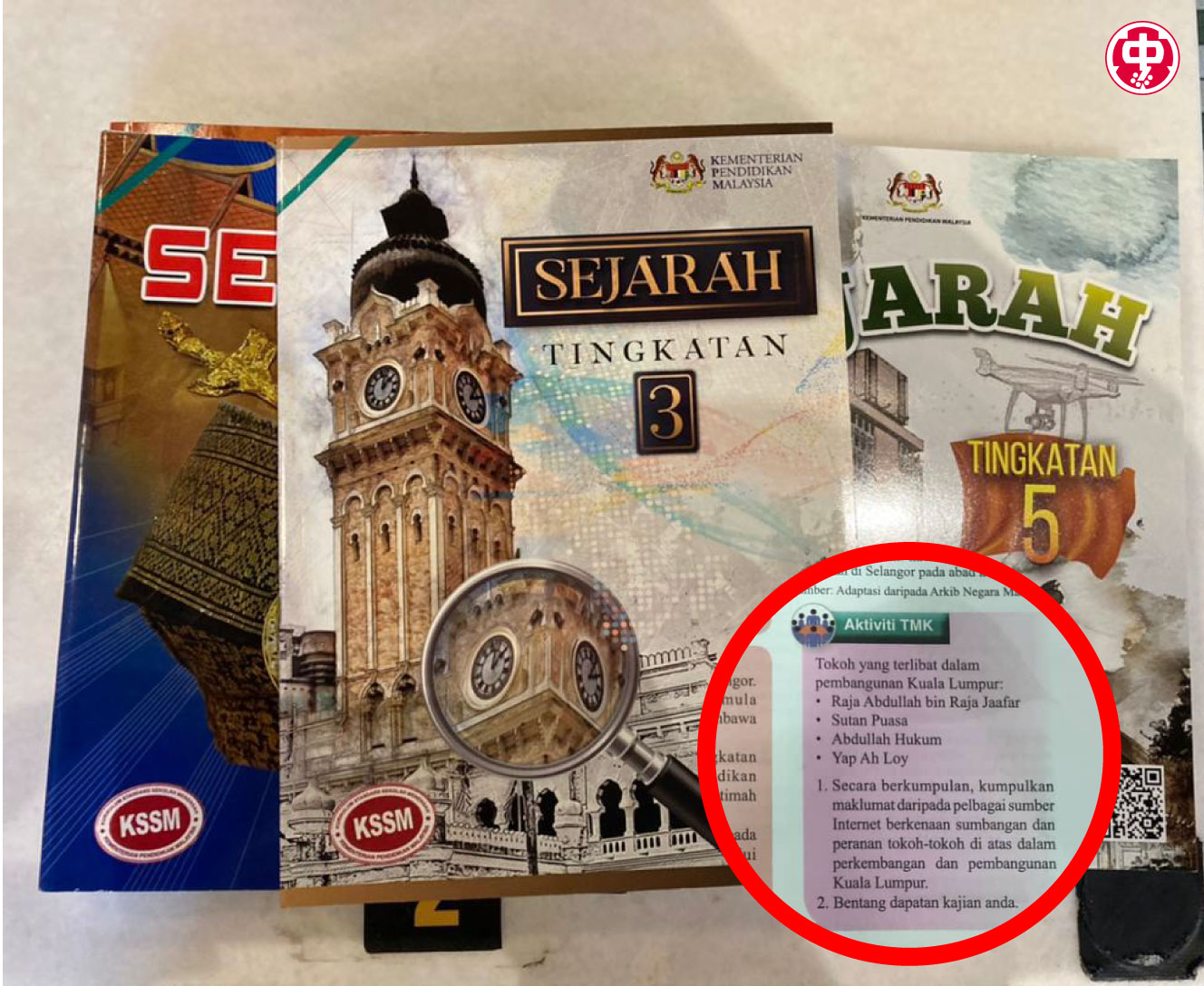Recently, the secondary school Sejarah textbooks currently adopted by schools have raised public concern and became a hot topic. Many expressed that there’s discrimination in the presentation of content in the Sejarah textbooks about Malaysians. Some believed the current secondary school history textbooks downplay the history of various ethnicities, while others believed that the Malay perspective of the books allow non-Malays to understand and be involved with the nation more, therefore not seeing it as a problem overall.
Regarding the arising controversy, the Kuala Lumpur and Selangor Chinese Assembly Hall (KLSCAH) believes that Malaysia is a country of diversity and that every ethnicity should have a fair share of their place in history. However, only recording the opinions of one ethnicity obviously cannot highlight and emphasise the nation’s concepts of diversity and inclusivity. It is not conducive to shape a sense of entitlement for the national identity of the country’s founders.
For example, the latest version of the Buku Teks Sejarah Tingkatan 3 (Cetak Pertama 2018) focuses on the history of social changes and political system development in various states and regions under British colonial rule and introduces how local societies and state rulers resist the coercion of Western colonisation, etc.
However, the latest version of this Form 3 Sejarah textbook ignores the historical facts about the contributions of other ethnicities such as the Chinese and Indians to the local community. In contrast, there were only a few lines of text introducing them briefly without the addition of details.
Kuala Lumpur – the capital of a country – has played a pivotal role in the developments and influences of the entire country. What is regrettable is that this national History textbook rarely talks about its relevance.
The British colonial officials elected Kuala Lumpur as the capital of the Federated Malay States for significant reasons. Apart from its strategic location, it has a great relationship with Yap Ah Loy to quell the civil war, re-establish social order and his leadership in the reconstruction of Kuala Lumpur. For the first time in the nation’s history, he switched to building solid houses with bricks, as a solution to breakouts of fires and floods.
Yap Ah Loy was also a pioneer of multicultural cooperation for all ethnicities and recognised by the Sultan of Selangor and British officials. Other Chinese and Malay state rulers are also in close cooperation.
Whether they are leaders of Malay or non-Malay communities, the contributions of such historical figures to the developments of Kuala Lumpur have almost disappeared in the content of these textbooks. In contrast, the only part showing attribution to these historical figures is in the Thinking Skills section of the Form 3 textbook (page 61), giving students a chance to discuss in groups. This section instructs students to go online and search for historical leaders such as Raja Abdullah bin Raja Jaafar, Sultan Puasa, Abdullah Hukum and Yap Ah Loy.
KLSCAH beliefs that the Ministry of Education has a responsibility to provide comprehensive historical facts, and not just autodidactic methods for students to search for information online through thinking skills alone. Is it enough for students to understand the entire founding history of Kuala Lumpur only by searching on Google?
In this era of technological breakthroughs, the widespread availability of information online allows scholars of all ages to have viewpoints and articles of their own. Therefore, we need to ensure that students can effectively collect information online, as well as filter accurate historical facts from there. This is a big challenge for both the teachers and the students.
KLSCAH believes that the historical contributions of Kuala Lumpur must be equally addressed in the country’s infrastructural developments, as well as the achievements of different ethnicities that work diligently for the Kuala Lumpur of today.
We propose that the government must seek scholarly opinions from all ethnicities, generate more research into introducing the development history of Kuala Lumpur and the contributions made by each ethnicity in the capital’s process, and integrate existing Thinking Skills. This is in line with the Ministry of Education’s original purpose of transforming Sejarah textbook syllabus – from Kurikulum Bersepadu Sekolah Menengah (KBSM) to Kurikulum Standard Sekolah Menengah (KSSM) – aimed at cultivating studying independence and critical thinking abilities on different historical topics.
KLSCAH believes that the primary goal of publishing Sejarah textbooks should be on the elaboration of the nation’s history. However, a lack of an all-encompassing teaching model of Sejarah will only narrow the students’ view on our nation’s history, which will not help promote unity across cultures. Only by objectively restoring historical facts of our ethnicities in the country’s development, only then will citizens have a proud sense of identity and belonging as Malaysians.

Photo: The Kuala Lumpur and selangor Chinese Assembly Hall (KLSCAH)

 中文
中文 BM
BM